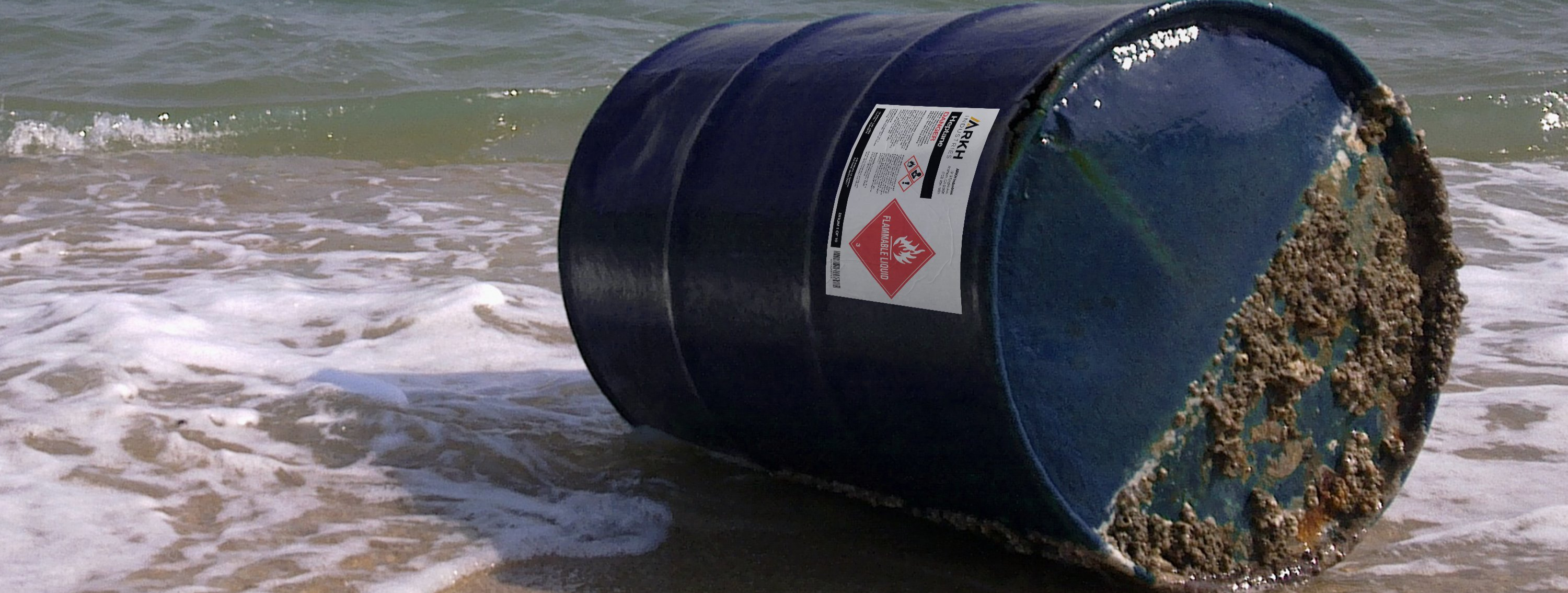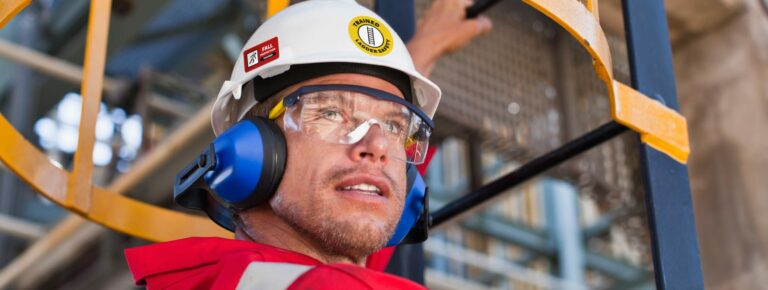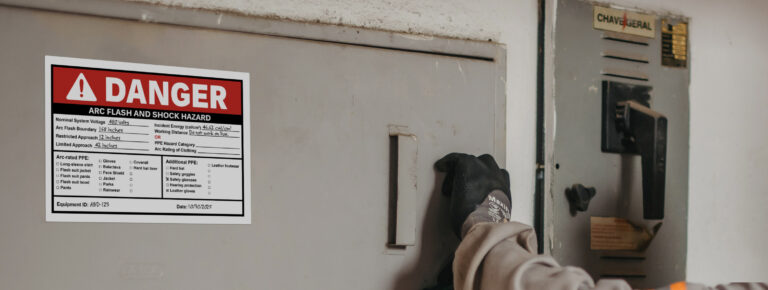
Why BS5609 Labels and Marine Durability Matter for Safety
Estimated reading time: 8 minutes
Overview: What is BS5609 compliance?
BS5609 compliance means that a label has met the most stringent tests for marine durability, meaning it can withstand a three-month saltwater submersion. Such rigorous standards ensure that if a chemical drum falls off a ship, the label will remain adhered, intact, and legible after an extended period in the ocean.
- Find the best printers to use with Avery labels for BS5609 compliance.
- Learn more about GHS label requirements for OSHA compliance.
Why BS5609-certified labels are important
In the most simplistic terms, BS5609-certified labels are important because they help workers identify hazards during emergencies at sea. Marine conditions (i.e., salt water, abrasive sand, UV damage, and extreme temperatures) are very harsh. These conditions can quickly wear down ordinary labels. For this reason, compliance with BS5609 is important for companies transporting dangerous goods (and specifically chemicals) overseas.
Imagine that a ship carrying hazardous chemicals has an accident at sea. The barrels tumble into the ocean. The chemicals in those barrels are potentially dangerous to wildlife, the environment, and humans trying to retrieve them. If the labels are intact, the rescue team can easily see how to handle the chemical drums safely. If the labels are gone, destroyed, or too damaged to read, workers have to guess, which greatly increases the danger posed by the chemicals.
What is the connection between BS5609 and GHS?
While BS5609 testing ensures that labels (and their printed information) stay intact, the Globally Harmonized System (GHS) is a document. Created by the United Nations (UN), it focuses on clear communication of chemical hazards. But the two concepts work towards the same goal: making sure workers can easily identify chemical dangers, no matter what.
Consider this: The GHS aims to communicate the dangers of potentially hazardous chemicals. Furthermore, it aims to do so in the most universally understood way. For example, GHS pictograms transcend language barriers by depicting hazards with symbols like fire, which anyone can understand. If GHS labels fall off or become too damaged to read, then communication breaks down immediately. So it follows that BS5609 compliance matters for GHS compliance.
Determining BS5609 label compliance
Who comes up with the rules?
The International Maritime Organization (IMO) is a specialized UN agency that maintains and develops the International Maritime Dangerous Goods (IMDG) code. As you might expect, the IMO sets minimum safety standards for shipping and establishes rules to prevent ocean pollution from ships through the IMDG code. This includes labeling requirements for hazardous chemicals. However, the IMDG code only broadly states that chemical labels must be “durable” in a marine environment. The code relies on British Standard 5609 (BS5609), written by the British Standards Institution (BSI), to outline exactly what marine durability means.
Moreover, the U.S. Occupational Safety and Health Administration (OSHA) adopted GHS guidelines in 2016. Now, OSHA Hazard Communication 1910.1200(a) also requires marine durability for overseas shipping and relies on BS5609 to define it as well.
Who enforces the rules for BS5609 labels?
Domestic law enforcement agencies are responsible for enforcing IMDG standards, which include BS5609 compliance. In the United States, the Department of Transportation (DOT) enforces IMDG guidelines as it is concerned with any transportation of hazardous materials. However, if chemicals in an oversea shipment arrive with illegible labels, OSHA can issue a citation because it affects workplace safety.
Who does the actual testing?
Accredited third parties, such as Smithers, test whether labels and printing methods meet BS5609 guidelines. Getting certified by an accredited institution is important for two reasons. Firstly, your labels are not BS5609-compliant unless an accredited third party certifies them. Secondly, the ISO internationally recognizes the testing methods and calibration laboratories of accredited companies. Without ISO recognition, you would need to have your labels certified in any country the shipment lands in or passes through.
Testing for BS5609 label marine durability
Many refer to BS5609 as the Marine Immersion Label Testing Standard. The clue is in the words “marine immersion.” Accredited companies like Smithers perform tests to replicate conditions that occur if chemical containers fall into the ocean. Therefore, BS5609 testing examines both label materials and the durability of printed information. These tests are divided into BS5609 Section 2 and BS5609 Section 3. (Section 1 is simply an overview of BS5609 in general.).
BS5609 Section 2: testing the label materials
BS5609 Section 2 tests are performed on blank labels before they are printed. This is just the baseline test to determine that the label materials stay intact and adhere in marine conditions. The label materials include the facestock (the primary surface of the label), adhesive, and any additional topcoats.
As previously mentioned, a GHS label must survive in the ocean in order to be BS5609-compliant. It needs to withstand things like salt water, abrasive sand, UV damage, and extreme temperatures. For example, here are some BS5609 Section 2 tests Smithers performs on blank labels to replicate those conditions:
- Marine exposure of labels (carried out at a test site on the south coast of England)
- Dimensional stability under artificial weathering, 48-hour peel adhesion to aluminum plates
- Peel adhesion after temperature cycling: 7 days at 60°C (140°F) and 2 hours at 0°C (32°F)
- Color fastness when exposed to artificial salt spray and sunlight
BS5609 Section 3: testing the printed label
Now, let’s consider BS5609 Section 3 testing, which certifiers perform on the final printed label. To understand Section 3 testing, it’s important to remember that just because a label is durable does not mean it is compatible with all types of printing processes and/or inks.
Firstly, the blank label has to pass Section 2 testing. Then, Section 3 tests are performed with specific ink and printer combinations. In the end, only specific label, ink, and printer combinations can be BS5609 Section 3 certified. Here are examples of Section 3 tests that Smithers performs:
- Print key effectiveness: resistance to print removal using adhesive tape
- Abrasion resistance: legibility and contrast after rolling in a mixture of sand and artificial sea water
- Permanence of print: color fastness and residual contrast after exposure to artificial salt spray and sunlight
If you just want durable waterproof labels for everyday use, simply match your label type to the printer you want to use. For example, you should only use laser labels with a laser printer and inkjet labels with an inkjet printer. Check out this article where we’ve written about choosing the right printer for regular labels in great detail before.
Choosing the right BS5609 labels
In general, award-winning Avery UltraDuty® GHS labels are considered the best labels for BS5609 compliance for several reasons. These labels are highly regarded by industry professionals because they offer exceptional durability, reliable adhesion, and compliance with stringent BS5609 standards. Furthermore, custom-printed UltraDuty GHS labels are all BS5609-certified.
Durability. Avery GHS UltraDuty labels are designed to withstand harsh environments. They are resistant to water, chemicals, abrasion, UV exposure, and extreme temperatures.
BS5609 certification. UltraDuty printable labels and custom-printed UltraDuty label sold by the roll have passed BS5609 Section 2 (durability) and Section 3 (print performance) tests performed by Smithers, which is a testing company accredited by the ISO. (Custom-printed UltraDuty labels by the sheet are Section 2 certified).
Reliable sticking power. These labels feature a strong adhesive that ensures they stay affixed to a variety of surfaces, including metal, plastic, and fiber drums, even in wet and oily environments.
High-quality printing. Avery UltraDuty GHS labels support high-resolution printing, allowing for clear and legible text, graphics, and barcodes. This is essential for ensuring that important safety information and compliance details are easily readable.
Versatility. They are available for both laser and pigment-based inkjet printers and have been certified with approved printers and/or inks in both categories.
Ease of Use. Online tools in the free Avery Design and Print Software as well as the subscription-based Avery GHS Wizard® make it easy to quickly add GHS information to chemical safety labels.
Safety first: ID chemical hazards in marine emergencies
In conclusion, BS5609 compliance means that labels can last in tough ocean conditions, like being underwater for three months. This is important because if chemical containers fall into the ocean, the labels will stay on and be easy to read for identification. Avery UltraDuty GHS labels are great for this because they are strong, stick well, and are designed for maximum print quality. These labels are certified for marine durability as outlined in BS5609 Section 2 and Section 3 (with approved printers). This helps keep people safe by identifying chemical hazards during shipping, making it easier to handle them properly.
Learn more about day-to-day chemical safety with secondary container labels and join the conversation on LinkedIn.
Please note, the contents of this article and related articles on avery.com are for informational purposes only, are general in nature, and are not intended to and should not be relied upon or construed as a legal opinion or legal advice regarding any specific issue or factual circumstance.



